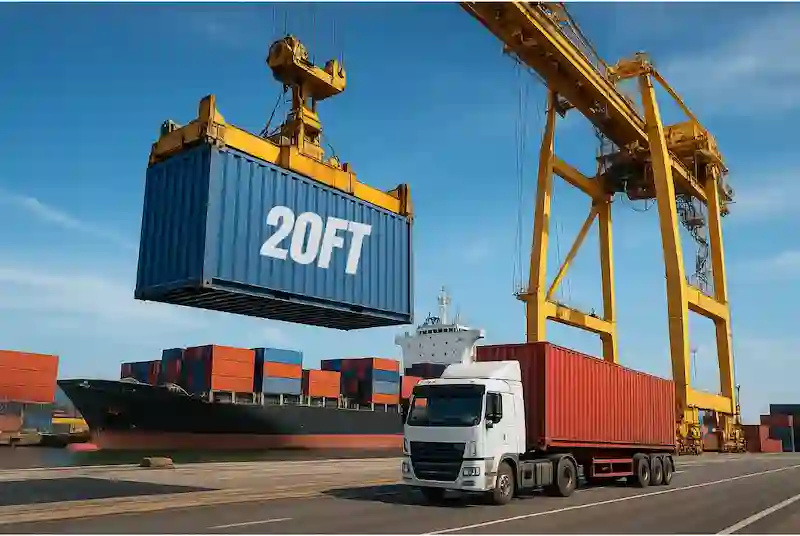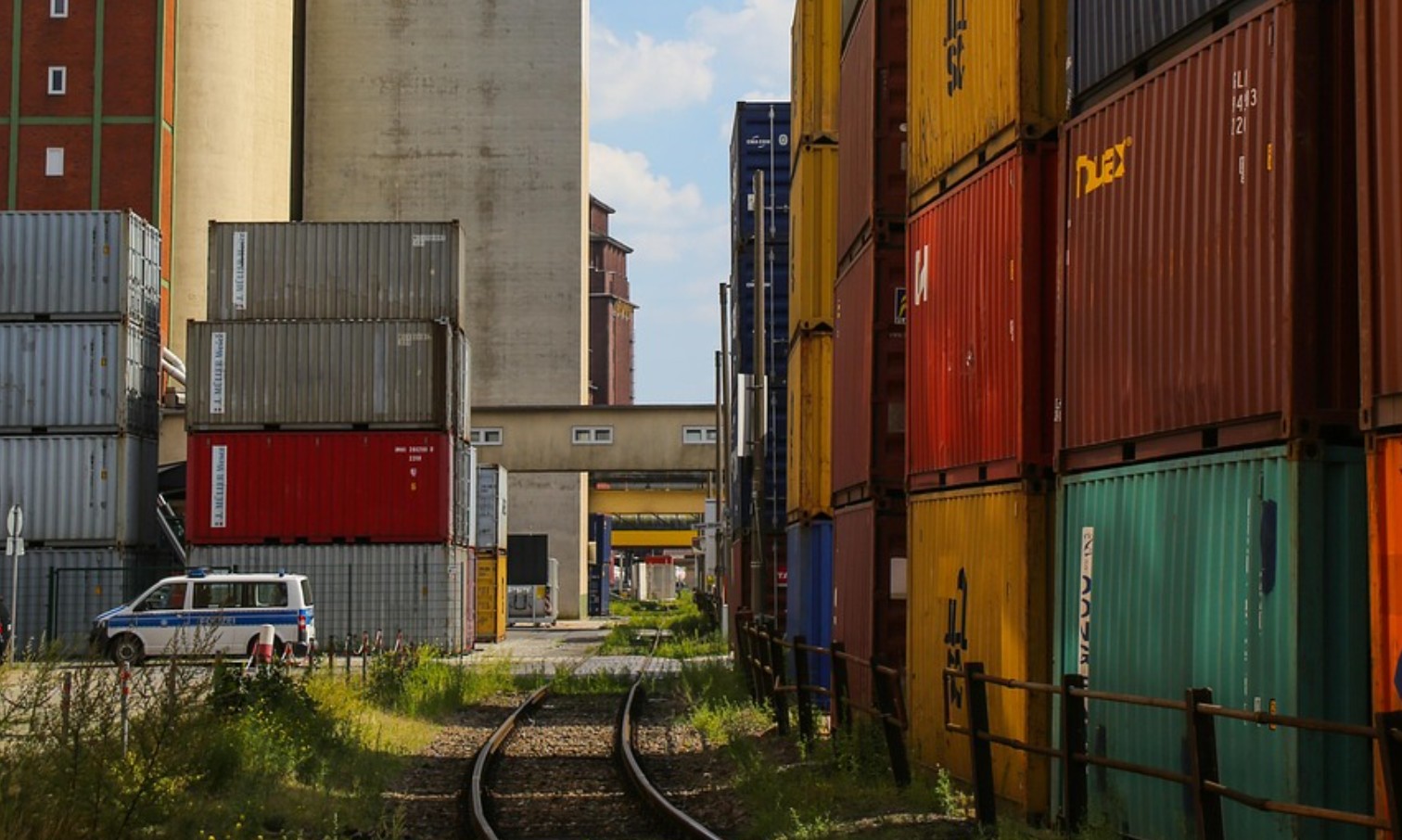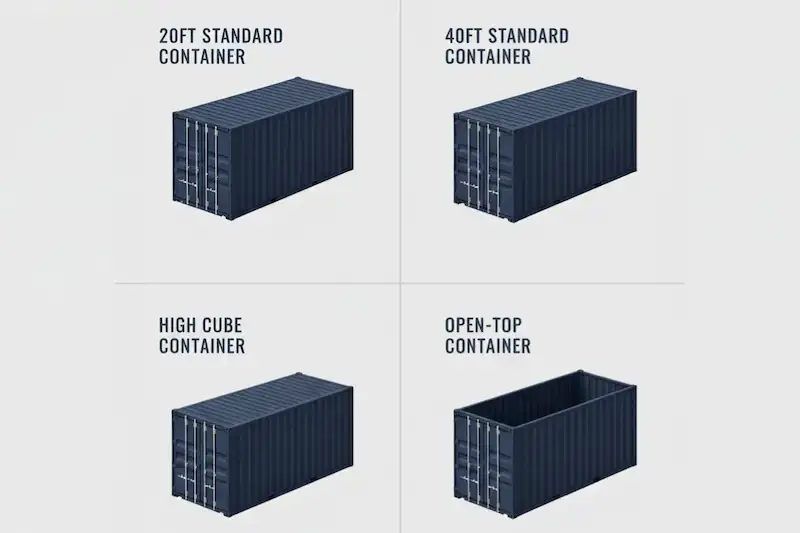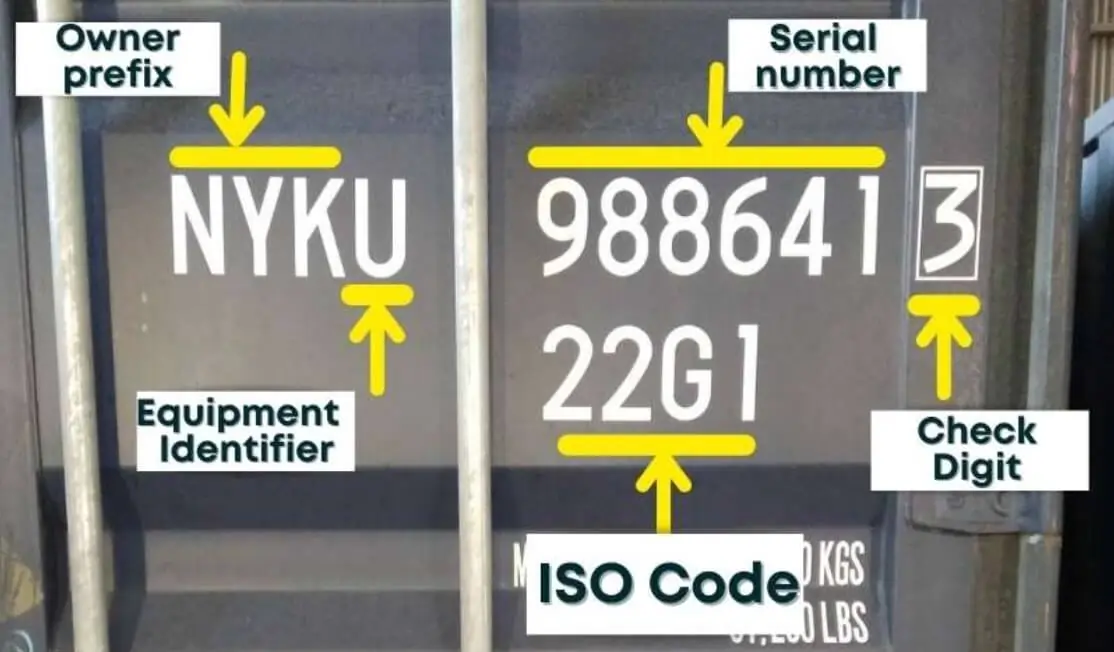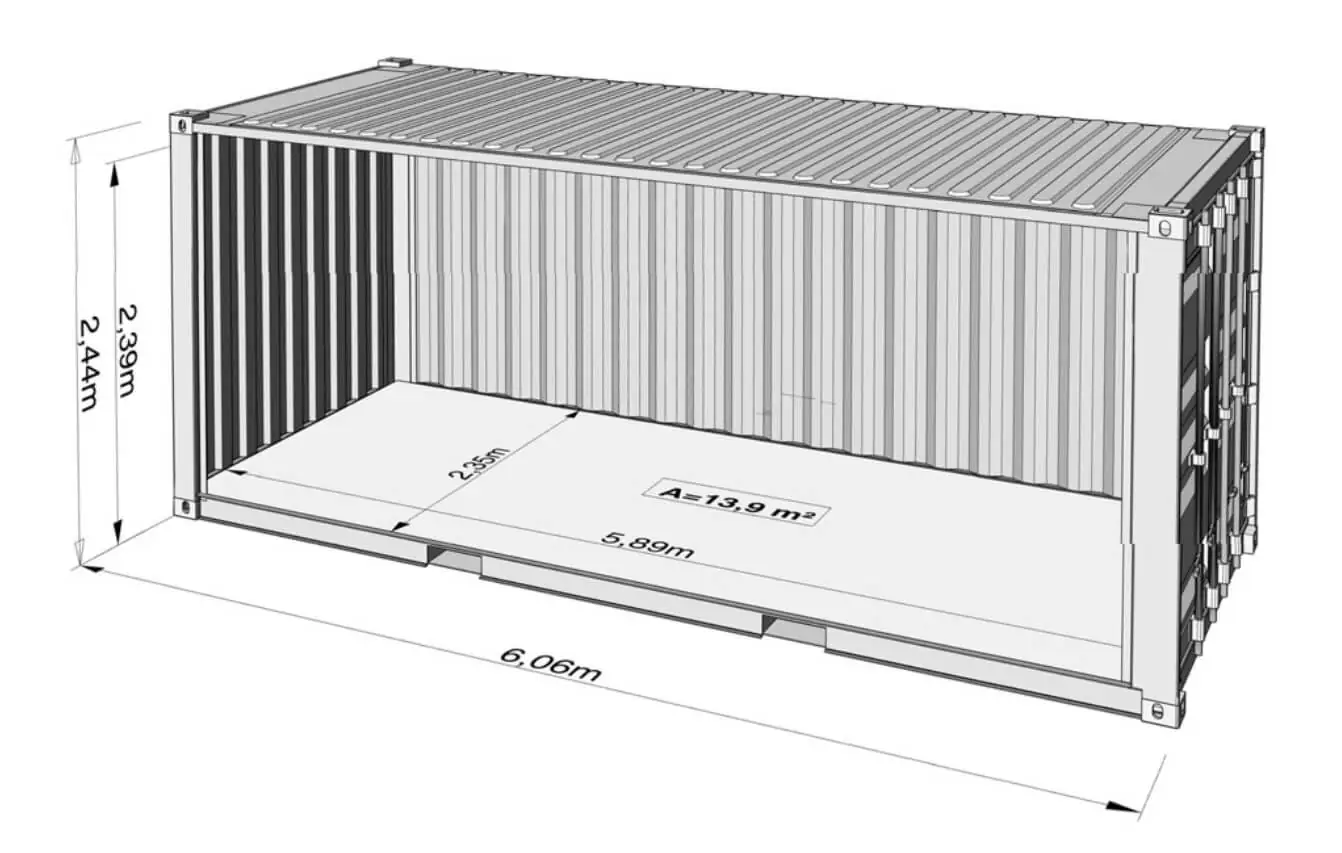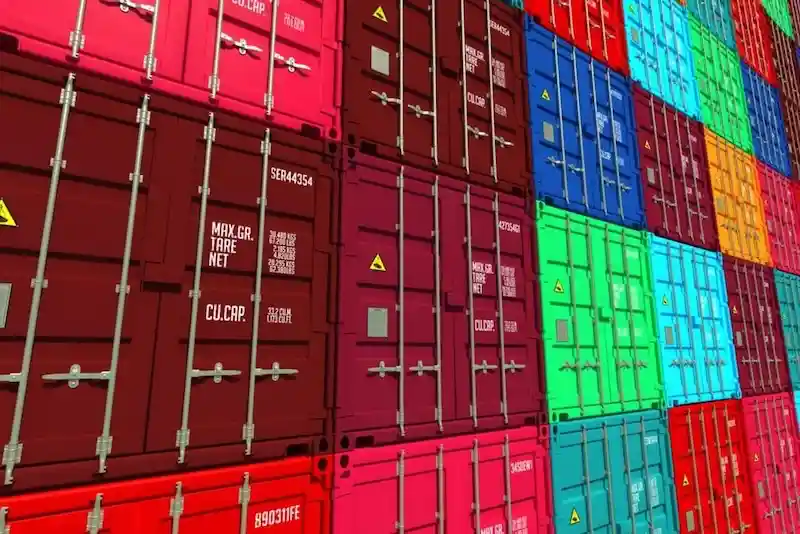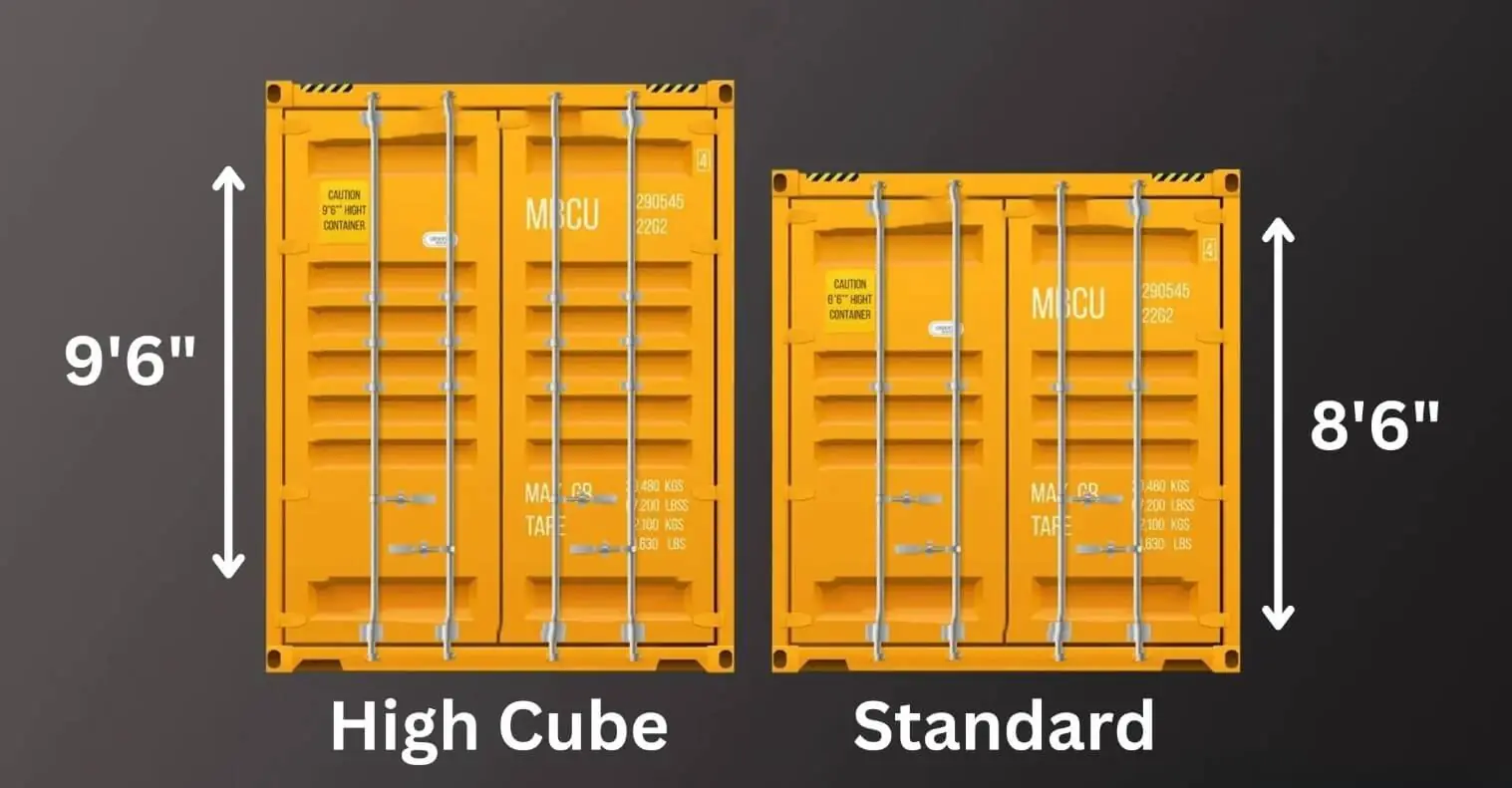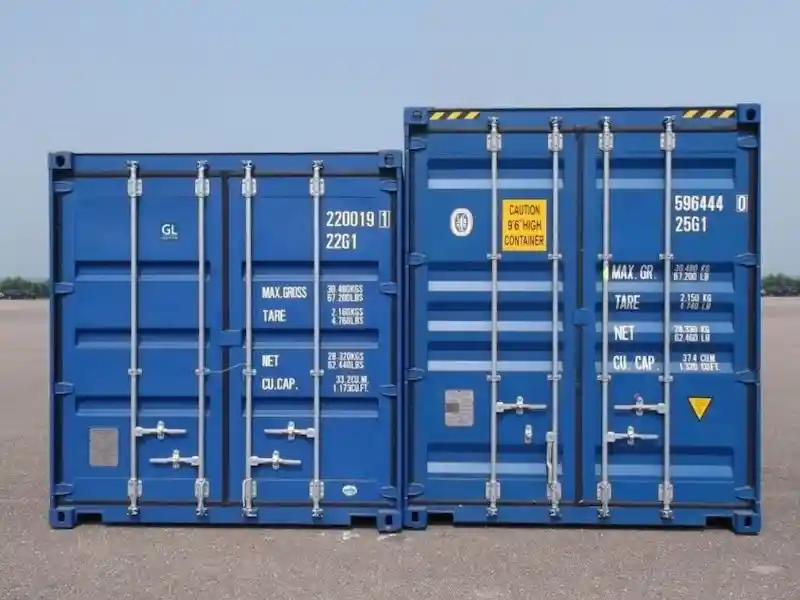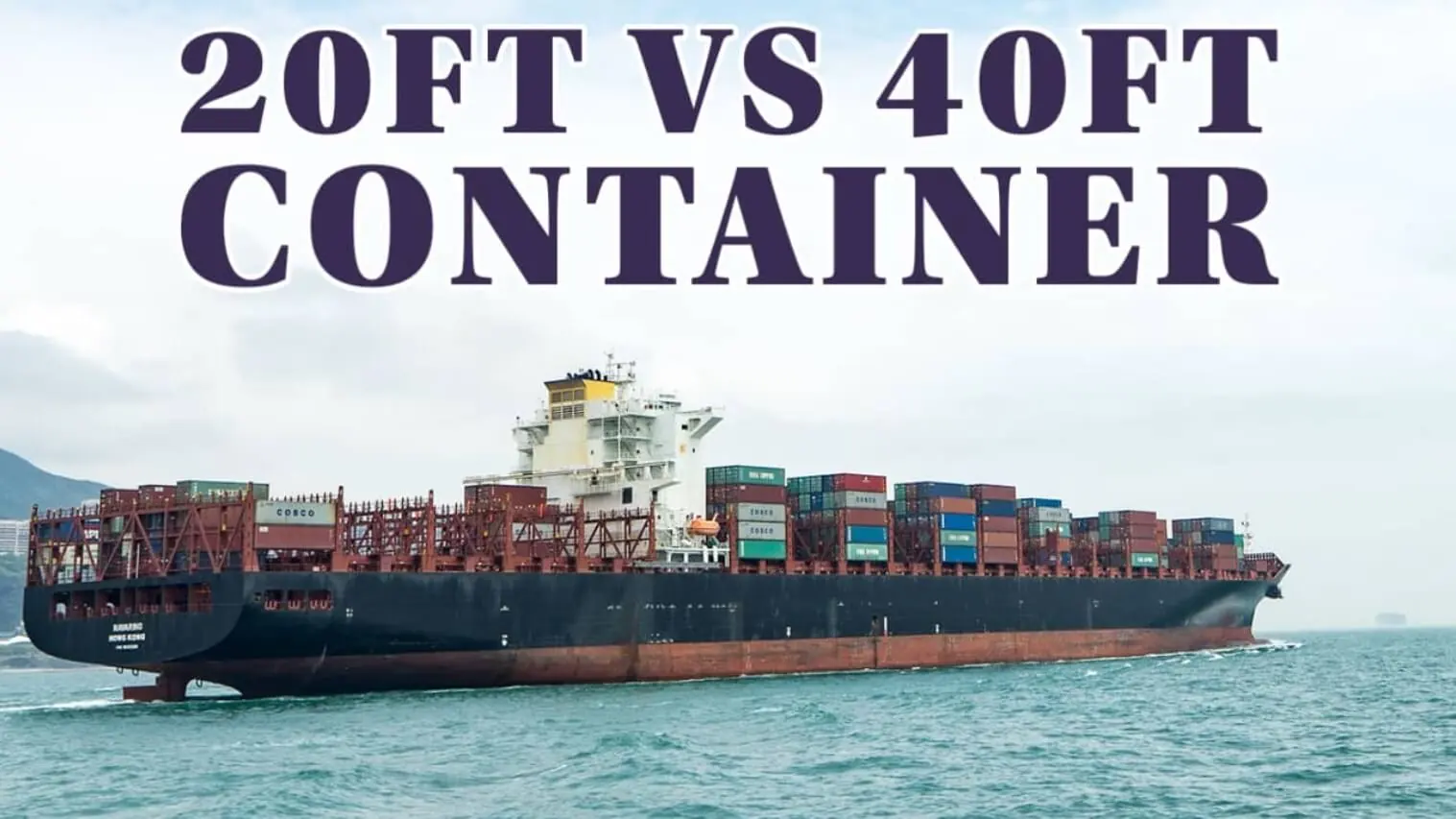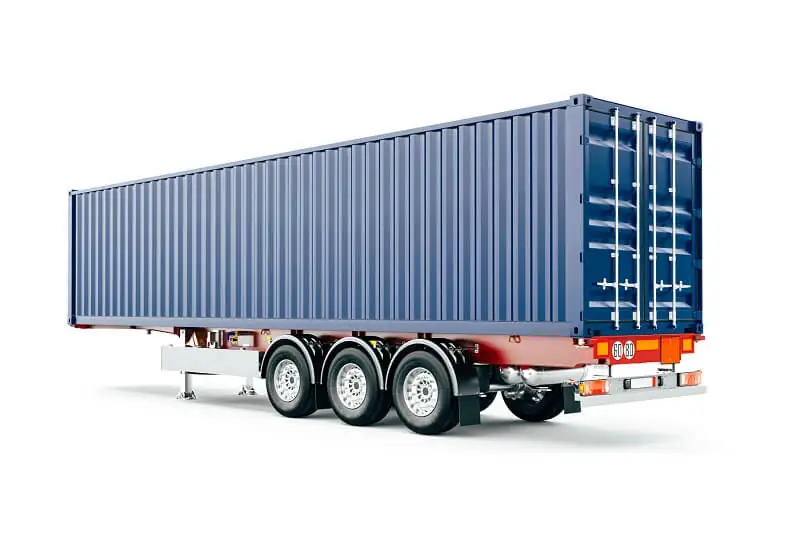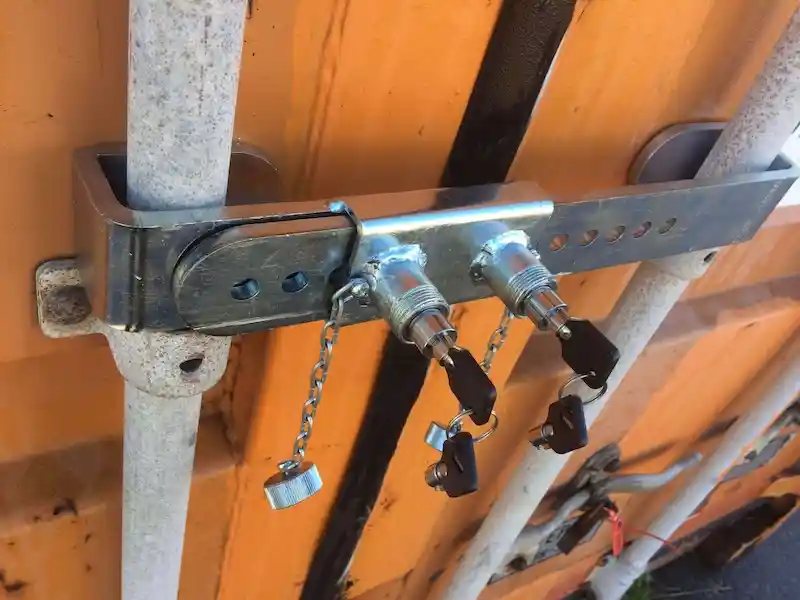20 Ft Vs 40 Ft Container Dimensions

When shipping internationally by sea, be it a new container or a used 20ft shipping container, options are numerous.
20ft shipping containers and 40ft shipping containers are the most prevalent types of storage containers. Containers, sometimes known as general-purpose containers, may carry almost any type of cargo, including boxes, barrels, and pallets, as well as vehicles and heavy equipment.
Before we go into the differences between a 20ft shipping container vs. 40ft shipping container, let’s have a look at the sizes and types of containers.
If you want to ship containers as a businessman, you need to organize a full container load, known as FCL among freight forwarders. 20ft, 40ft, and 40ft-high cube containers are the most used standard containers for freight forwarding. To pick the most appropriate one, you must evaluate the number of your goods. If your items are bulky or unique, you should check with your supplier or freight forwarder to determine the best option.
At Pelican Containers, we offer the best quotes on new and used shipping containers. So, just in case you’re searching for a 20ft shipping container for sale near you, feel free to contact us. And now let’s decide on the dispute between 20ft vs. 40ft containers: what is the best container to use for transporting your goods, the difference in size and appearance, and find out important factors that will help you make a decision.
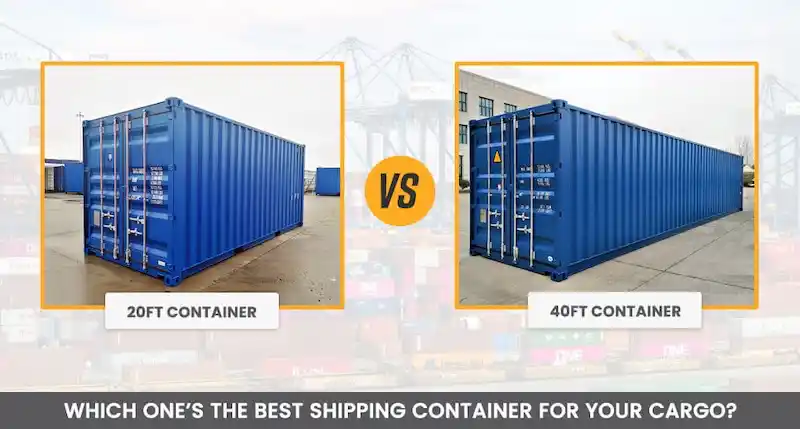
The Appearance of 20ft and 40ft Shipping Containers
48,000 bananas. 200 full-sized mattresses. If you’re shipping electronics, a 20ft container can hold up to 18,000 iPads. Yet, in the confrontation, 20ft vs. 40ft shipping container – the capacity will be higher when choosing the second option. But, this can be both an advantage and a drawback, depending on your goals and the project’s cost-effectiveness.
The same goes for the 20ft and 40ft container types, also known as a dry van. Dry vans are so called because they can transport almost any dry cargo. It might be anything from boxes, pallets, and barrels to garments already on hangers.
Externally, the containers are practically the same. Choosing a 20ft container vs. a 40ft container, you have to understand that they have the same strength, flexibility, and waterproofing. The width of the containers is pretty much identical to make it convenient to stack them when transported by sea. A 20ft container is much more compact but holds half as much cargo, so the choice may depend on what kind of cargo and how much of it you are going to transport.
Everything inside the containers may be customized to fit and accommodate the dry cargo.
However, you should be clear on the difference in length, width, height, and capacity of 20ft and 40ft containers in terms of appearance. 20 ft vs. 40 ft container dimensions:
- Length :5.9 m/ 19.4ft for 20ft and 12.03m/ 39.5ft for 40ft
- Width : 2.35 m/ 7.8ft for 20ft and 2.4m/ 7.9ft for 40ft
- Height : 2.39 m/ 7.9ft for 20ft and 2.39m/ 7.9ft for 40ft
- Weight : 2300 kg/ 5071.5 Ibs for 20ft and 3750 kg/8268.8 for 40ft
- Payload Capacity : 25000 kg/ 55126.9 Ibs for 20 ft and 27600 kg/ 61200Ibs for 40ft
- Cubic Capacity : 33.2 m2/ 1172 cu ft for 20ft and 67.7m2/ 2389cu for 40ft
If you’ve made up your mind on buying a container, get a 40ft shipping container for sale at Pelican Containers.
Now that we have an idea of what the capacity of these containers is, let’s see what the price range looks like.
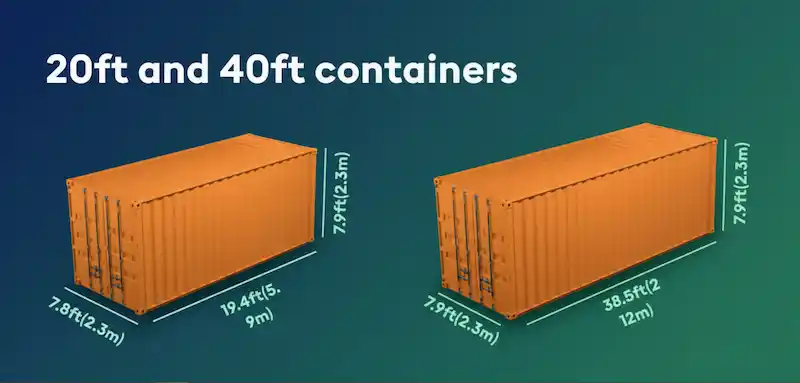
How Much Do 20ft vs. 40ft Containers Cost?
The cost of a container varies greatly depending on the location of the container. If the containers are in a deficit area, you will have to pay a far higher price than if they are purchased from a surplus location. Because of this, it is quite challenging to determine the exact price. Accordingly, if you decide on a 40ft vs. a 20ft container, the second option will cost you more anyway.
Do you already have a specific location where you want to buy your next containers? Then reach out to our team and get a 15 minutes free call. They will guide you on the exact cost of a 20ft shipping container, along with the cost of a 40ft shipping container.
How to Choose Between 20ft and 40ft Container Size
When deciding which option is better, 20ft vs. 40ft container, consider more than just the loading room. Basically, there are 3 aspects to consider if you want to make a cost-effective, transportation-efficient decision.
Price
The first point to remember is that 20ft shipping containers are not less expensive than 40ft containers. Contrary to common misconception, a 20ft container does not cost half as much as a 40ft. A 20ft container is usually around 75% of the price of a 40ft. Therefore, if you are going to transport a large amount of cargo, the best choice between a 40ft vs. 20ft container is to purchase a 40ft. So, even if you need a few units, your solution will be much more cost-effective. Depending on what you’re shipping and where it’s going, there may be various methods to save money. To receive a quote, please contact us immediately.
Storage & Loading
Because larger containers provide more space, you should consider your storage and loading needs when selecting a shipping container. When shipping pallets in a container, we recommend that they should be loaded in one row along the container’s length and another row along the container’s width. Pallets may be piled up easily.
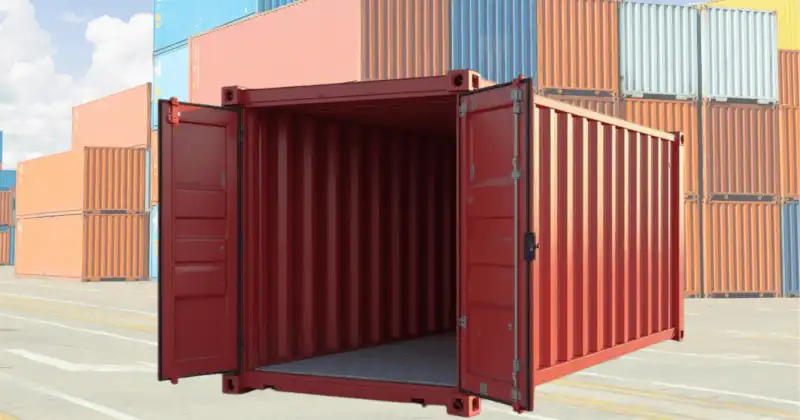
Thinking small? This 20ft unit is the most versatile and cost-effective container for local storage and small projects. Our guide explains how its size compares to the bigger 40ft units.
Volume vs. Weight
Based on parameters like weight to volume ratio and weight distribution, each container is built to hold certain cargo. If you intend on shipping large cargoes, keep in mind that you might not be able to fill the container to capacity.
One of the reasons why 20ft containers are better for transporting dense materials and big cargo like machinery, metals, cement, and sugar is because of this. Due to the limited space, it may not be the ideal alternative for large goods.
A 40ft container is usually the best option for shipments like furniture or steel pipes. A 40′ container can’t hold twice as much weight as a 20ft container, but it can hold more than twice as much volume.
Are you still contemplating a 20 ft vs 40 ft container cost? 40ft shipping container price or a 20ft shipping container price? Contact Pelican Containers if you require exceptional pricing and a competitive offer on shipping containers.
Final Thoughts
When choosing a 40ft vs. 20ft shipping container, you should base your decision on three main parameters. The volume and weight of the load play a significant role. If you need to transport heavy cargo, then the best choice is to buy 20ft standard shipping containers. If you need to carry a bulky but not so heavy load, buy 40ft standard shipping containers. In addition, a 40-foot container costs only 25% more on average and not twice as much as many think. Based on these findings, you can choose the right option for your needs.
Besides, we suggest you use the best container delivery services from us! We offer a wide range of new and used containers worldwide. Call or contact us in any convenient way, and we will be happy to help you make the right 40ft vs. 20ft container choice!
Are you unsure whether to buy a 20ft or 40ft shipping container?
Since the worldwide container market is brimming with a plethora of options, it is important to select the finest option when buying shipping containers for your business.
Vanessa is a dedicated writer and content enthusiast at Pelican Containers. With a background in practical writing and a keen eye for clarity, she transforms complex container topics into easy-to-understand and useful content. Her passion lies in exploring the evolving world of container usage — from smart storage hacks to global logistics trends.
When she's not writing, Vanessa loves discovering creative shipping container projects or traveling to find new inspiration.
Explore thoughtful, informative, and accessible content with Vanessa!
Vanessa is a dedicated writer and content enthusiast at Pelican Containers. With a background in practical writing and a keen eye for clarity, she transforms complex container topics into easy-to-understand and useful content. Her passion lies in exploring the evolving world of container usage — from smart storage hacks to global logistics trends.
When she's not writing, Vanessa loves discovering creative shipping container projects or traveling to find new inspiration.
Explore thoughtful, informative, and accessible content with Vanessa!
FAQ
When is a 40ft shipping container the best choice?
If you are going to transport a large amount of cargo and the volume of it is big enough but not excessively heavy, then you are better off choosing a 40ft container.
When is a 20ft shipping container suitable for me?
You can use 20ft containers to transport heavy loads. Use this option for bulk, heavy metals, and other high-density loads.
What is the comparison of 20ft and 40ft shipping containers and their features?
There are not as many differences between 20ft and 40ft containers as you might think. A 40ft container allows you to have more usable shipping space. But this does not mean at all that you can carry twice as much cargo. It is not designed for heavy loads, unlike a 20ft container. In addition, the price of a 20ft container is about 75% of the cost of a 40ft one.
